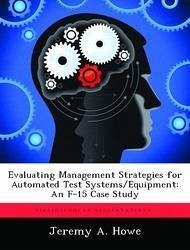The management of United States Air Force ATS/E presents a variety of issues that affect the long-term capability and mission readiness of weapon systems. Traditional procurement processes suggest that individual aircraft platform System Program Offices (SPOs) developed, improved and replaced ATE on an "as-required" basis. Increased obsolescence, however, and a concern for maintaining longer-term viability provided the necessary inertia for a movement towards the procurement and development of consolidated, common test equipment that would support multiple weapon systems. In 1998, the Air Force Chief of Staff directed HQ AFMC to establish a Common Support Equipment office to facilitate the combination of similar legacy ATE into common equipment. Today, some ATE continues to be managed by individual SPOs, while other ATE is primarily managed by the Automated Test Systems Division at Warner-Robins Air Logistics Center. This research examines the differences of these two approaches. Specifically, this research focuses on the management of two pieces of ATE for a mature aircraft system - the F-15.
Bitte wählen Sie Ihr Anliegen aus.
Rechnungen
Retourenschein anfordern
Bestellstatus
Storno








